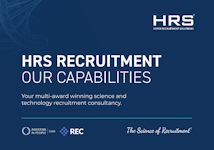
The latest statistics point to a job market that saw steady rather than spectacular progress in 2016. The Office for National Statistics’ recently released UK labour market report shows that there were 31.8 million people in work as of September to November last year, an improvement by 294,000 on a year earlier.
However, time invariably marches on, with many candidates for science jobs and their potential employers now turning their attentions firmly to 2017. What are some of the trends that will likely define the science recruitment market in the year ahead?
1. A culture of engagement
As the CIPD’s Employee Outlook report for autumn 2016 has stated, while the UK’s net job satisfaction has improved since spring 2016 – now sitting at +40 – this is still some way short of the +48 recorded for autumn 2015.
As a result, it’s fair to say that most science organisations could probably improve their engagement strategies, which looks likely to be a key focus in the coming 12 months. More engaged employees will be more effective brand ambassadors, which will significantly aid your recruitment drive.
2. The continued primacy of mobile
According to Pew Research Center, 28% of all Americans have used a smartphone to search for a job, rising to 53% of those aged between 18 and 29 – and you can bet that similar trends are continuing to hold sway on this side of the Atlantic.
It therefore couldn’t be more important to continue the optimisation of your science organisation’s online presence for mobile users. If potential candidates visit your site via their smartphone or tablet and find it inaccessible, slow-loading or difficult to navigate, they are unlikely to remain for long.
3. Workplace diversity remains crucial
The benefits of more diverse workforces are well-documented, but nonetheless bear repeating. Firms with greater diversity in their personnel are more adaptable, can offer a broader range of skills and experiences and deliver better overall results.
Management consultancy McKinsey & Company, for example, found that companies in the top quartile for gender diversity were 15% more likely to financially outperform those in the bottom quartile . For ethnic diversity, the figure was 35%.
4. Treating the candidate like a customer
That term that has been mentioned so often in recruitment circles in the last few years – ‘candidate experience’ – certainly won’t go away in 2017. In fact, science employers will need to make even more of an effort to make candidates feel as pampered as a customer, throughout the recruitment process, if they are to lure the biggest talent.
With Millennial and Generation Z jobseekers notoriously impatient compared to those before them, more emphasis is set to be placed on a swift and efficient candidate experience than ever before.
5. Centring an employer brand around the employee
With so many avenues through which disgruntled (or for that matter, contented) current or former employees of your organisation can voice their true opinions of what it is like to work for your firm, it is becoming even harder to preserve a certain image of your organisation without your employees’ cooperation.
2017 will therefore be a year in which you need to be more alert than ever to manage your employer brand, in large part by cultivating the best possible working environment.
Are you a science employer looking to work with experts in such sectors as biotechnology, pharmacology and medical devices to secure the talent that your firm needs in the 12 months ahead? Talk to Hyper Recruitment Solutions about the wide-ranging, specialised and informed recruitment solutions on which we have built our reputation.
